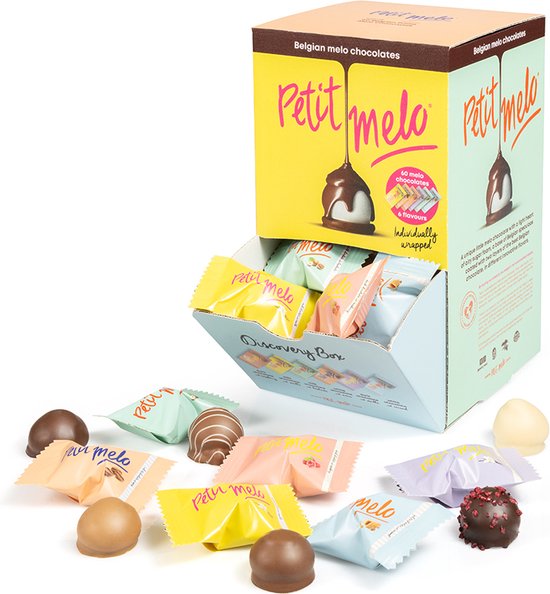There's something magical about discovering fruits that not everyone knows about. Petit melo might be small, but it's got a big reputation among fruit enthusiasts. This tiny melo is more than just a snack—it's a burst of flavor that can brighten your day. Whether you're looking for a refreshing treat or something to add to your fruit salads, petit melo is here to steal the spotlight.
Imagine biting into something so sweet and tangy that it feels like a tropical getaway in one bite. That's exactly what petit melo offers. It's not just another fruit; it's a culinary adventure waiting to happen. And guess what? It's packed with nutrients that make it a must-have in your diet.
Let's dive into why petit melo is worth all the hype. From its origins to its nutritional benefits and how you can enjoy it, this article has got you covered. So grab a snack, and let's uncover everything there is to know about this delightful little fruit!
Read also:Beer Garden Monteverde Your Ultimate Guide To The Best Spot In Town
What Exactly is Petit Melo?
Petit melo is one of those fruits that might fly under the radar if you're not paying attention. But trust me, once you taste it, you'll wonder how you ever lived without it. Think of it as a mini version of a regular melon, but with a flavor profile that’s all its own. The name "petit melo" literally translates to "little melon," which is fitting given its size.
This fruit is a member of the Cucurbitaceae family, which also includes cucumbers, squash, and other melons. Its skin is smooth and pale green, while the inside is a vibrant yellow or orange. It's not just cute—it's packed with vitamins and minerals that make it a powerhouse for your health.
Where Does Petit Melo Come From?
Believe it or not, petit melo has quite the backstory. This fruit is believed to have originated in Southeast Asia, where it's been cultivated for centuries. Countries like Thailand, Vietnam, and Indonesia have long embraced petit melo as a staple in their diets. It thrives in warm climates, making it a perfect fit for tropical regions.
Its journey to the rest of the world is relatively recent, but it’s quickly gaining popularity. Farmers in other parts of the globe are starting to grow petit melo because of its unique taste and growing demand. It's no wonder why it's becoming a favorite among health-conscious individuals and foodies alike.
Why Petit Melo is a Must-Try
Okay, so we've established that petit melo is adorable and has a rich history. But why should you care? Well, for starters, it's absolutely delicious. The flavor is a perfect balance of sweetness and tanginess, making it a refreshing treat on a hot day. Plus, it's incredibly versatile—you can eat it fresh, blend it into smoothies, or even use it in savory dishes.
But that's not all. Petit melo is also a nutritional powerhouse. It's packed with vitamin C, potassium, and antioxidants, all of which contribute to better overall health. Whether you're looking to boost your immune system or maintain healthy skin, this little fruit has got you covered.
Read also:Pando 39 The Living Network Thats Rewriting Natures Playbook
Petit Melo Nutrition Facts
Let's talk numbers. Here's a breakdown of what you can expect from one serving of petit melo:
- Calories: Approximately 30-50 per fruit
- Vitamin C: Up to 50% of your daily recommended intake
- Potassium: Around 200-300 mg
- Fiber: About 2 grams
- Sugar: Naturally occurring, around 10 grams
These numbers might vary slightly depending on the size and ripeness of the fruit, but you get the idea. Petit melo is a low-calorie snack that packs a punch in terms of nutrients.
How to Pick the Perfect Petit Melo
Choosing the right petit melo is key to enjoying its full potential. Here are some tips to help you select the best one:
- Look for a firm fruit with no soft spots.
- Check the skin for a smooth, pale green color. Avoid any with blemishes or discoloration.
- Give it a gentle sniff. A ripe petit melo will have a sweet, melon-like aroma.
- Feel the weight. A heavier fruit usually means it's juicier.
Once you've picked out your perfect petit melo, store it at room temperature until it's ripe, then pop it in the fridge to extend its shelf life.
Delicious Ways to Enjoy Petit Melo
Now that you've got your hands on some petit melo, it's time to get creative in the kitchen. Here are a few ideas to inspire you:
1. Fresh and Simple
There's nothing quite like enjoying petit melo straight from the rind. Cut it in half, scoop out the seeds, and dig in. It's the easiest way to savor its natural sweetness.
2. Smoothie Magic
Blend petit melo with a splash of coconut water and a handful of ice for a refreshing summer drink. Add some mint leaves for an extra burst of flavor.
3. Fruit Salad Extravaganza
Combine petit melo with other tropical fruits like mango, pineapple, and papaya. Drizzle with honey and lime juice for a zesty twist.
4. Savory Surprises
Don't be afraid to experiment with savory dishes. Grilled petit melo with a sprinkle of sea salt and chili flakes makes for a unique appetizer that’s sure to impress.
Petit Melo and Its Health Benefits
Beyond its taste, petit melo has some serious health benefits that make it a standout fruit. Here are just a few:
- Boosts Immunity: Thanks to its high vitamin C content, petit melo helps strengthen your immune system.
- Hydrates Naturally: With its high water content, it's a great way to stay hydrated, especially during the summer months.
- Promotes Healthy Digestion: The fiber in petit melo aids in digestion and helps prevent constipation.
- Supports Heart Health: The potassium in petit melo contributes to maintaining healthy blood pressure levels.
Who knew such a small fruit could do so much for your body?
Petit Melo in Global Cuisine
Petit melo isn't just a snack—it's a star ingredient in many global cuisines. In Southeast Asia, it's often used in desserts like fruit tarts and sorbets. In Latin American dishes, it's paired with spices and herbs to create savory salads. Even in Western cooking, chefs are starting to experiment with petit melo in both sweet and savory recipes.
Its versatility makes it a favorite among chefs and home cooks alike. Whether you're whipping up a quick snack or preparing a fancy meal, petit melo can add a unique twist to your dishes.
Potential Challenges with Petit Melo
While petit melo is amazing, there are a few things to keep in mind. For one, it can be tricky to find in some regions. If you're lucky enough to have a farmer's market nearby, that's your best bet for finding fresh, locally grown petit melo. Additionally, some people might find the seeds a bit cumbersome to remove, but with a little practice, it becomes second nature.
Another thing to note is that petit melo doesn't have a very long shelf life once it's ripe. So, it's best to enjoy it within a few days of purchasing.
Conclusion: Why Petit Melo Deserves Your Attention
So there you have it—everything you need to know about petit melo. From its origins in Southeast Asia to its incredible nutritional benefits and delicious taste, this little fruit has a lot to offer. Whether you're a fruit lover or just looking to try something new, petit melo is definitely worth adding to your grocery list.
Now it's your turn to take action! Head to your local market or grocery store and pick up some petit melo. Try out some of the recipes we mentioned, and let us know how you like it. And don't forget to share this article with your friends so they can discover the joy of petit melo too. Who knows? You might just start a trend!
Table of Contents
- What Exactly is Petit Melo?
- Where Does Petit Melo Come From?
- Why Petit Melo is a Must-Try
- Petit Melo Nutrition Facts
- How to Pick the Perfect Petit Melo
- Delicious Ways to Enjoy Petit Melo
- Petit Melo and Its Health Benefits
- Petit Melo in Global Cuisine
- Potential Challenges with Petit Melo
- Conclusion


